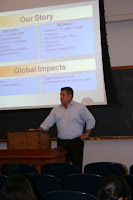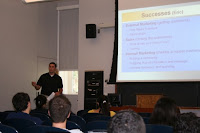
Recently, The Octopus Solution gave a lecture to a great group of international business students who attend the Harvard Business School. The lecture consisted of our background stories, the global impact on our businesses and successful strategies we have implemented. One of our key talking points was:
The Three Hearts
One of our main foundational systems of The Octopus Solution is The Three Hearts. Did you know that an octopus has three hearts? Each heart pumps bright blue blood to different parts of the body, constantly renewing oxygen and other nutrients vital to the survival of the octopus. In the same way, the three hearts within The Octopus Solution function together as one for the constant renewal of customers vital to the survival of the small business. These three hearts: the potential customer, the established customer, and the repeat customer, are responsible for pumping and renewing blood and oxygen through out the small business. Without a customer, regardless of location, funding, and staff, there is no business.
The better you are at creating repeat customers, the more successful your business will be in the long run. “Acquiring a customer costs five to ten times more than retaining one. Repeat customers spend, on average, 67% more. After 10 purchases a customer has referred as many as 7 other people.”
Bottom line: keeping customers satisfied will pay massive dividends in the end. Making sure customers come back means knowing exactly what they want. Consequently, the more you can profile the potential customer and established customer, the better chance you have at catering to the needs of a potential customer and maintaining the needs of a repeat customer.


No comments:
Post a Comment